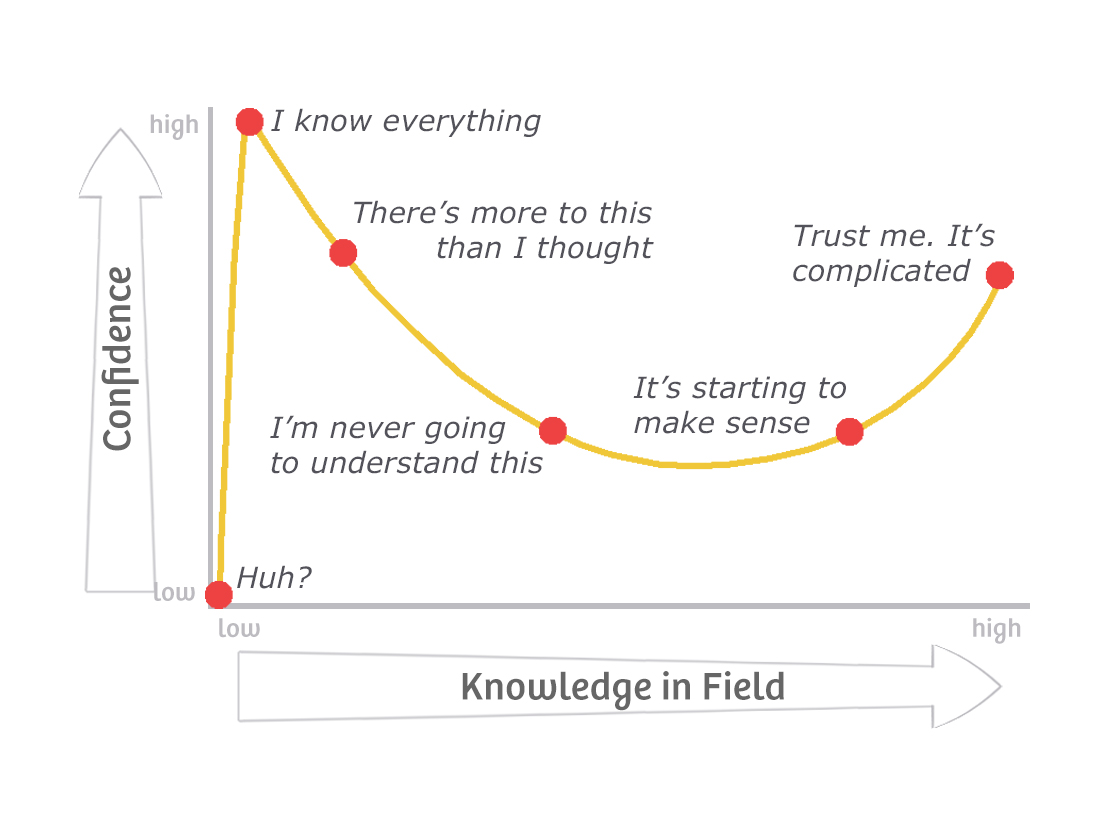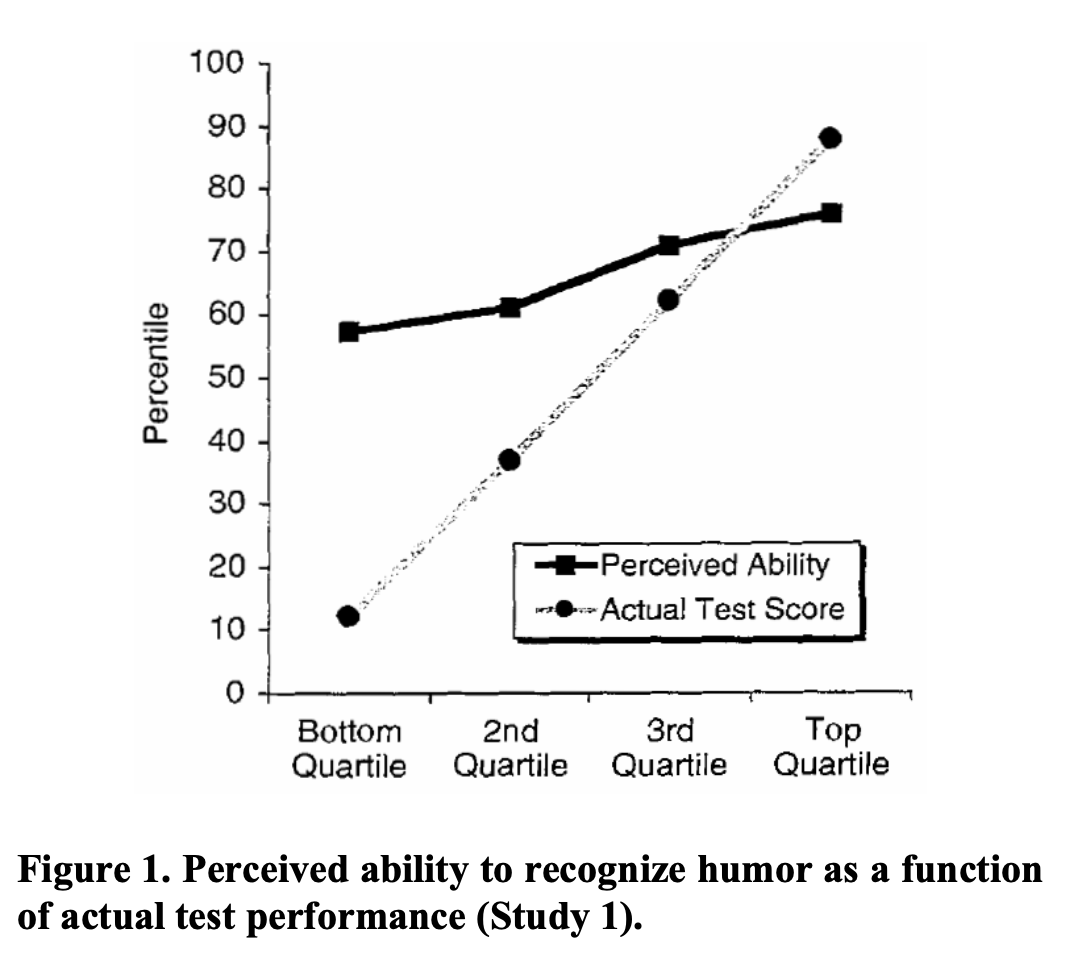Dunning-Kruger effect is not impostor syndrome
It is really easy to get your hands on the original paper from the Dunning-Kruger effect. I displays the unfamous chart:

Wow! It's not what I expected! I expected to see this chart:

The curve is so deformed on the internet that even popularizers use a wrong interpretation. Let's figure out what's going on.
The study
In 1995, McArthur Wheeler robs a bank with lemon juice on his face. Why so? He thought it would make him invisible to surveillance cameras.
This event was the starting point of Dunning and Kruger's search into self-assessment. They estimated the self-assessment of ~65 Cornell University undergraduates in humor, logic and grammar tests.
The first test:
- Professional comedians rate 20 jokes
- Participants rate the same 20 jokes
- Participants assess their competency of a 0 to 99 scale
- Participants are ranked per quantile
The result is displayed in the paper:

There are three other tests in the paper. They follow a similar procedure, we won't get into their details.
Discussion
There are some very questionnable biases with this experiment.
First, we can question if the participant count is significant. This is a difficult question to answer. Later experiments were conduct with similar results with much larger cohorts.
But do undergraduates evaluate themselves like a senior engineer or an old teacher? There is, supposedly, a large impact of the western culture. Some studies suggest that the experiment shows different results in other parts of the world.
There is also another experiment that question the procedure of scaling itself. Using probabilistic models, they show that representation is key to the interpretation of self-assessment data. They claim (I haven't read any meta-analysis on the subject) there is no Dunning-Kruger effect.
What can be said of this paper?
Even if there are wise and smart way to discuss the Dunning-Kruger effect, the widespread chart is no where near an even good explanation.
As Tal Yarkoni puts it:
Rather, it’s that incompetent people think they’re much better than they actually are. But they typically still don’t think they’re quite as good as people who, you know, actually are good.
There is no "gap", like the one showed in the widespread chart. Note that Dunning and Kruger never told otherwise. The paper is just misinterpreted.
Conclusion
I am not the first one to talk about this error of interpretation. Many articles already covers this, including the Wikipedia page.
The wrong chart is famous and widespread. It's gonna take years before it is forgotten. Yet, its success is due to the appeal to use it to contempt beginners. It provides an easy "I have impostor syndrome", instead of taking a good introspective view on oneself. I think it's more rewarding to face your fears and find who you are than following the ideal you are not.
Whenever someone mentions the Dunning-Kruger effect, remind the person that there is no such effect, or it's not exactly the appealing effect we think it is. Ask them instead:
- What did you achieve to think of yourself unworthy?
- Who do you think is worthy? How do you compare with them?
